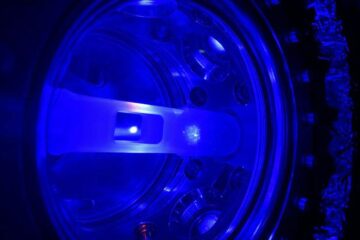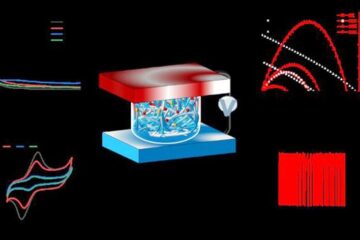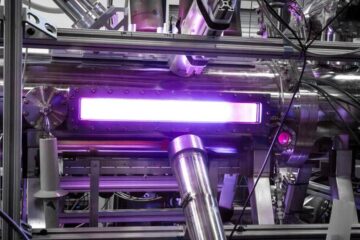1001 Hawaiian Nights Dedicated to the Cool and the Far Away!

British astronomers today (June 24th) saw the first images from an ambitious new programme of discovery, the UKIRT Infrared Deep Sky Survey (UKIDSS). The survey will scour the sky with the world’s most powerful infrared survey camera ( WFCAM) to find some of the dimmest and most distant objects in the Universe. UKIDSS will reach at least twenty times deeper than the largest current survey conducted at this wavelength. Infrared light can be used to study objects that are not hot enough to show up in visible light, such as failed stars in our own Galaxy, as well as objects like distant quasars that are so far away that the expansion of the Universe has shifted their light into the infrared spectrum. UKIDSS will help to solve existing astronomical conundrums, such as when galaxies and quasars first lit up, and will certainly also discover new phenomena, because of the large area and depth.
WFCAM, the Wide Field Camera, was built at the UK Astronomy Technology Centre (UKATC) in Edinburgh, and is mounted on the UK Infrared Telescope (UKIRT) in Hawaii. The new images confirm the power of the camera. The strength of WFCAM comes from the large field of view, equivalent to imaging the full moon in a single exposure, made possible because the camera contains four of the largest available new-generation infrared detectors.
“WFCAM is enormously powerful. We will have surpassed the size of the current best survey after just 2 weeks, and our plan is a survey 100 times greater. It’s about exploring new territory, and we hope to discover new phenomena. In the US they have had tremendous success with the Sloan Digital Sky Survey at visible wavelengths. Now we urgently need a new detailed survey to complement Sloan beyond the visible, in the infrared.” said Steve Warren, UKIDSS Survey Scientist from Imperial College.
Andy Adamson, Head of Operations for UKIRT, said “As can been seen from the images, quite extraordinary advances in technology have been made over the past 15 years and we are now poised to carry out sky surveys in the infrared with a quality matching the very best available at visible wavelengths. UKIDSS is a tremendously ambitious survey, combining unprecedented depth with an enormous area on the sky to achieve its goals. WFCAM on UKIRT is the only instrument in the world capable of meeting these challenges. Over the coming years, more than 1000 nights will be devoted to completing this huge effort.”
UKIDSS consists of five separate surveys, two of which will examine regions within our own galaxy, the Milky Way. The other three surveys will encompass some of the furthest visible regions of the cosmos, to study the universe in the distant past.
Within our Galaxy, UKIDSS astronomers hope to find new neighbours for our Solar System (even closer than the nearest known star Proxima Centauri) by discovering the first example of a type of star postulated by theorists, called a ’Y dwarf’. Y dwarfs are a type of Brown Dwarf – the ’failed stars’ that are too small and cool to ignite and burn their hydrogen gas. The coolest brown dwarfs known have temperatures of 600K (over 300ºC), but theorists predict that there should be a missing link between these brown dwarfs and the cooler gas giant planets like Jupiter, which has a temperature of 150K (about -120ºC). Y dwarfs are that missing link, but because they are so cool and faint, they have never been seen before.
The surveys looking outside our Galaxy will be searching to the edge of the observable Universe, back to the earliest times after the Big Bang when the first galaxies formed. The further away we look, the further we see back in time, and the more the light is stretched (redshifted) by the expansion of the Universe, reaching the Earth at infrared wavelengths. So one has to search in the infrared to find the most distant, and earliest, objects in the Universe.
Astronomers want to understand the conditions in the Universe at the earliest times and to identify the ’epoch of reionisation’ – the time when the first galaxies and quasars began to shine, ending the Universe’s ’dark ages’. They believe that this happened about 750 million years after the Big Bang (when the Universe was 6% of its present age), but want to pinpoint the time by finding the earliest possible quasars. By studying them, the astronomers hope to refine our understanding of how galaxies formed.
The UKIDSS survey data will be used by thousands of astronomers all over Europe, and eventually all over the world. However, the hard work of designing the survey and carrying out the observations is being undertaken by a consortium of just over 100 astronomers. Andy Lawrence, the Principal Investigator for the UKIDSS consortium, from the University of Edinburgh, said “This takes Europe back into the lead in mapping the Universe. The project has been designed to achieve specific goals – for example finding the nearest stars and the most distant quasars – but it’s such a big leap I am expecting the unexpected…”
Media Contact
All latest news from the category: Physics and Astronomy
This area deals with the fundamental laws and building blocks of nature and how they interact, the properties and the behavior of matter, and research into space and time and their structures.
innovations-report provides in-depth reports and articles on subjects such as astrophysics, laser technologies, nuclear, quantum, particle and solid-state physics, nanotechnologies, planetary research and findings (Mars, Venus) and developments related to the Hubble Telescope.
Newest articles

Superradiant atoms could push the boundaries of how precisely time can be measured
Superradiant atoms can help us measure time more precisely than ever. In a new study, researchers from the University of Copenhagen present a new method for measuring the time interval,…

Ion thermoelectric conversion devices for near room temperature
The electrode sheet of the thermoelectric device consists of ionic hydrogel, which is sandwiched between the electrodes to form, and the Prussian blue on the electrode undergoes a redox reaction…

Zap Energy achieves 37-million-degree temperatures in a compact device
New publication reports record electron temperatures for a small-scale, sheared-flow-stabilized Z-pinch fusion device. In the nine decades since humans first produced fusion reactions, only a few fusion technologies have demonstrated…





















